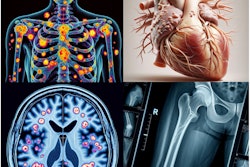Radiology departments can take proactive steps to promote environmental sustainability, according to an article published April 23 in Radiology.
A team led by Kate Hanneman, MD, of the University of Toronto in Ontario, Canada, proposed ways that departments can strategize to promote planetary health beyond turning imaging machines off when not in use. These include forming sustainability teams, opting for low-energy imaging tests when possible, and working with imaging vendors, among others.
“There are other opportunities to improve environmental sustainability that are beyond energy,” Hanneman told AuntMinnie.com. “It’s important to also think about minimizing waste and not using single-use supplies. I encourage everyone to think beyond just saving energy.”
While radiology overall has explored ways to implement and maintain sustainable practices, many practices struggle in this area. Through the production and use of medical imaging equipment and supplies, radiology is estimated to generate up to 1% of overall greenhouse gas emissions, the researchers highlighted.
Hanneman said that departments may struggle with deciding on what actions to take in promoting sustainability, including becoming overwhelmed with finding where to start.
The researchers described how coordinated approaches and concrete actions can help combat and adapt to climate change. They highlighted that these approaches could improve the health of their communities and patients.
Examples of sustainable practices in action include transitioning from disposable to reusable medical supplies, turning off climate-control systems in unoccupied areas, and powering down equipment when not in use. Hanneman said that overall greenhouse gas emissions can be reduced by up to 33% for MRI and between 40% and 80% for CT.
The researchers also suggested that decision-support tools can be implemented to choose lower-energy imaging tests when appropriate. Carbon dioxide emissions vary by imaging modality and are higher for MRI and CT compared with ultrasound and x-rays. Hanneman suggested that when more than one imaging test is appropriate to answer a clinical question, low-energy imaging tests can be prioritized. Additionally, the researchers noted that for MRI, abbreviated and low-field protocols and applications can be used.
Finally, the authors recommended working with manufacturers to update or refurbish equipment rather than purchasing new imaging equipment, when feasible. One example they listed is switching from single-dose to multipatient contrast injection systems and establishing sustainable waste management programs.
Hanneman said that while these approaches in practice could help with sustainability goals, departments should establish dedicated sustainability teams and dashboards to track and measure key metrics and performance indicators. She told AuntMinnie.com that this includes building diverse teams that include all key stakeholders, including radiologists, technologists, leadership, IT, and facilities management.
The full article can be found here.



















